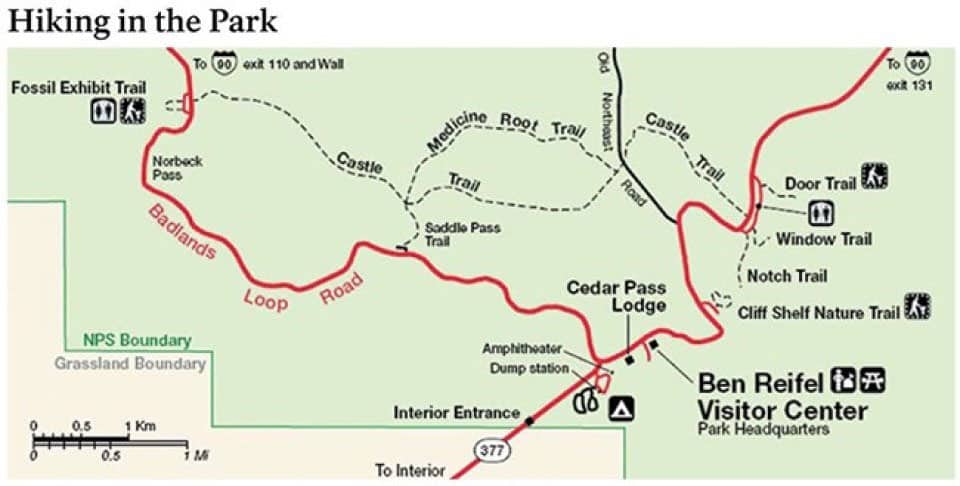Best maps for hiking are crucial for a safe and enjoyable outdoor adventure. This guide explores various map types, from traditional topographic maps to cutting-edge digital applications, highlighting their strengths and weaknesses for different terrains and hiking skill levels. We’ll delve into essential map features, techniques for effective navigation, and resources for finding the perfect map for your next hike, ensuring you’re well-equipped to explore the wilderness with confidence.
Whether you’re a seasoned hiker tackling challenging mountain trails or a beginner exploring local paths, understanding how to choose and utilize the right map is paramount. This guide provides a comprehensive overview of the key considerations, empowering you to make informed decisions and enhance your hiking experience.
Key Map Features for Hikers
Choosing the right map is crucial for a safe and enjoyable hiking experience. Understanding the key features of a good hiking map allows you to navigate effectively, assess potential risks, and appreciate the landscape around you. This section details the importance of several key map elements.
Scale and Contour Lines
Scale refers to the ratio between the distance on the map and the corresponding distance on the ground. A smaller scale (e.g., 1:50,000) covers a larger area but with less detail, while a larger scale (e.g., 1:25,000) shows more detail but covers a smaller area. For hiking, a larger scale map is generally preferred for better accuracy in navigation and identifying features. Contour lines represent lines of equal elevation. The closer the contour lines are together, the steeper the terrain. Widely spaced contour lines indicate gentler slopes. Understanding contour lines is vital for assessing the difficulty of a hike and identifying potential hazards like cliffs or steep ascents. For example, closely clustered contour lines on a map might indicate a challenging climb requiring extra time and caution.
Interpreting Elevation Changes and Identifying Potential Hazards
By studying contour lines, hikers can anticipate elevation changes and plan accordingly. Sudden changes in contour line spacing signal steep ascents or descents, requiring careful consideration of physical fitness and appropriate gear. Map symbols, such as those indicating cliffs, ravines, or water crossings, further highlight potential hazards. For instance, a symbol depicting a rocky outcrop would alert hikers to the possibility of a difficult scramble. Careful examination of the map before embarking on a hike allows for proactive risk assessment and planning.
Using Map Symbols and Legends
Hiking maps utilize a standardized system of symbols and a legend to represent various features. The legend explains the meaning of each symbol. Hikers should familiarize themselves with the legend before setting out. Common symbols include trails (often marked by different line thicknesses or colors to indicate difficulty), water sources (springs, streams, rivers), points of interest (viewpoints, campsites, historical sites), and elevation information. Understanding these symbols allows for efficient route planning and identification of useful resources or interesting landmarks along the way. For example, a hiker looking for a water source would quickly locate it by referencing the appropriate symbol on the map and its legend.
Comparison of Map Symbols
| Feature | Topographic Map Symbol | Trail Map Symbol | GPS Map Symbol |
|---|---|---|---|
| Trail | A thin, solid line, possibly with color-coding for difficulty | A thicker line, often with color-coding and possibly a dashed line for unmaintained sections | A line with varying thickness and color depending on the trail’s characteristics |
| Water Source (River) | A blue, wavy line | A blue, wavy line, possibly simplified | A blue line, often with shading to indicate width |
| Campsite | A tent symbol | A tent symbol or a simple “Camp” label | A tent icon, potentially with additional information |
| Cliff | A brown, jagged line | A brown, simplified jagged line or label | A brown shaded area, potentially with elevation data |
Using Maps Effectively While Hiking
Navigating the outdoors with a map and compass, or a GPS device, is a crucial skill for any hiker. Effective map use ensures safety, allows for efficient route planning, and enhances the overall hiking experience. Understanding how to orient yourself, track your progress, and handle unexpected situations are key components of responsible and enjoyable hiking.
Successful map navigation relies on a combination of map reading skills, practical application, and preparedness for unforeseen circumstances. This section will detail techniques for using maps effectively to ensure a safe and rewarding hiking adventure.
Orienting Oneself Using Map and Compass (or GPS Device)
Proper orientation is the foundation of successful map navigation. To orient a map using a compass, first identify a prominent feature on the map that is also visible in the landscape (e.g., a peak, a river bend, a road intersection). Align the compass’s direction of travel arrow with the corresponding direction on the map. Then, rotate the map until the compass’s magnetic needle aligns with the north arrow on the map. This ensures the map accurately reflects the surrounding terrain. Using a GPS device is simpler; the device will automatically show your location and orientation on the pre-loaded map. Regularly checking the device’s signal strength is vital, however, as GPS can be affected by dense tree cover or atmospheric conditions.
Tracking Progress on a Map During a Hike
Regularly marking your position on the map throughout your hike is essential. After every significant landmark or change in direction, make a note of your location on the map using a pencil. This allows you to visually track your progress and easily identify any deviations from your planned route. Comparing your current location to your planned route can reveal if you are on schedule or if adjustments are needed. Using a waterproof pen is recommended for paper maps, and regularly saving your position on a GPS device is crucial.
Dealing with Unexpected Situations Using a Map
Getting lost can happen to even experienced hikers. If you find yourself disoriented, remain calm. First, identify a prominent landmark visible in your surroundings. Then, locate that landmark on your map. This will give you a general idea of your location. Next, retrace your steps mentally, referring to your marked progress on the map. If still uncertain, consider using your compass to find a known route or feature, such as a trail or water source. If using a GPS device, utilize its ‘return to start’ or ‘track back’ function. Always inform someone of your planned route and expected return time before embarking on a hike.
Maintaining and Protecting Paper Maps During a Hike
Paper maps are vulnerable to the elements. To protect your map, consider placing it inside a waterproof map case or a sealed plastic bag. Avoid folding the map repeatedly in the same places, as this can damage it over time. Instead, use a folding system that creates clean creases, allowing for easier use and preserving the map’s condition. Keeping the map clean and dry will extend its lifespan and ensure its usability throughout your hike. A pencil is preferable to a pen for marking your progress to avoid smudging or ink bleed-through.
Illustrative Examples of Hiking Maps
Understanding how different terrains are represented on maps is crucial for successful and safe hiking. The following examples illustrate how topographic, trail, and desert maps depict key features for various hiking environments. Careful map reading is paramount for planning and navigating your route.
Mountainous Hiking Route Map
This hypothetical route traverses the rugged peaks of the fictional “Eagle’s Crest” mountain range. A topographic map would prominently display contour lines, closely spaced to indicate steep inclines and widely spaced to show gentler slopes. Elevation is crucial; the map would show peaks exceeding 10,000 feet (3048 meters), with significant changes in elevation along the trail. Key features would include clearly marked trails (possibly with difficulty ratings), prominent landmarks such as ridgelines and valleys, and potentially water sources indicated by symbols. The map’s legend would explain these symbols. An elevation profile, accompanying the map, would graph the elevation changes along the planned route, highlighting the steepest ascents and descents. This allows hikers to anticipate physical challenges and plan accordingly. For example, a section might show a 2000-foot climb over 2 miles, followed by a gentler descent of 1000 feet over 3 miles.
Forest Trail Map
Imagine a hiking trail through the Redwood National Park. A trail map for this area would emphasize the network of trails, showing their interconnectedness and the distance between points. Points of interest, such as scenic overlooks, historical markers, or campsites, would be clearly labeled. The map would also highlight potential hazards, such as stream crossings (depicted with symbols indicating the nature of the crossing, like a bridge or ford), steep sections, and areas prone to mud or slippery conditions. The scale of the map would be relatively large to show detail, allowing hikers to plan rest stops and anticipate the terrain changes. For instance, the map might indicate a 2-mile stretch of relatively flat trail followed by a 1-mile section with a significant elevation gain, followed by a stream crossing marked as a potentially hazardous ford.
Desert Hiking Route Map
Consider a trek across the Mojave Desert. A map of this area would prioritize the depiction of water sources, which are scarce. Springs, wells, or even dry washes where water might be found after rainfall would be meticulously marked. The map would likely use a larger scale to display details crucial for navigation in the relatively featureless landscape. Navigational challenges, such as unmarked trails, could be indicated. The map would clearly show compass directions and possibly include information about potential landmarks, such as unique rock formations or vegetation patterns, that could aid in orientation. For example, the map might highlight a 10-mile stretch between water sources, emphasizing the importance of carrying sufficient water and planning rest stops carefully. The map might also indicate the presence of sand dunes or areas with limited visibility, presenting potential navigational challenges.
Summary
Selecting the best map for your hiking adventure is a critical step in ensuring a safe and successful journey. By understanding the various map types available, their key features, and effective usage techniques, you can confidently navigate any trail, from gentle forest paths to rugged mountain ascents. Remember to always prioritize safety and preparation, utilizing your chosen map effectively to enhance your outdoor experience and minimize potential risks.




